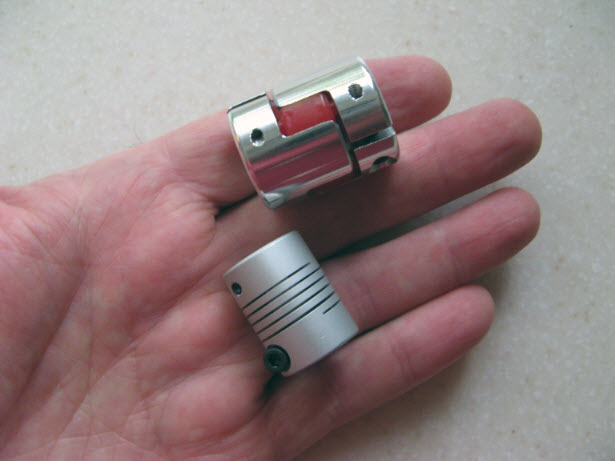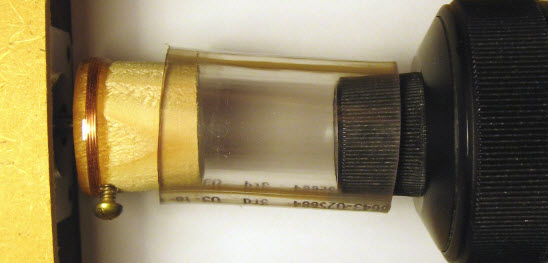A few weeks ago, concern was expressed about lateral stress on the fine focus mechanism, caused by misalignment of the stepper motor and the focus knob.
I hope I clarified at that time that the two tapered cones collaborate with the vinyl tubing to make what is essentially a double-joint universal coupler that applies very little sideways pressure.
However, in related postings,
Greenfields showed us his bespoke adapter using a flexible link similar to
http://www.ebay.com/itm/300752549179 (CNC Flexible Plum Coupling Shaft Coupler), and
dolmadis asked specifically about a flexible coupler like this:
http://www.ebay.co.uk/itm/5-6-6-35-8mm- ... 0631482123 .
At that time, I commented that
Sorry, I can't say. I have no hands-on experience with those couplers, and my imagination permits several very different results.
I have since rectified that lack of experience. I ordered samples of both those couplers. Here is what they look like:

The answer to dolmadis's question is that in my opinion these couplers are completely
not suited to this application and would place the focus block at significant risk.
The problem is that these couplers are designed to transfer large amounts of torque while compensating for only small amounts of misalignment, both typical of what you might need in a commercial precision machine tool setup.
In contrast, the microscope focus application requires only tiny amounts of torque, while any DIY setup is liable to have significant amounts of misalignment. I have deliberately misaligned my setup here, so you'll get the idea:

I haven't figured out how to make a mechanical measurement, but based on their feel in my hands, I estimate the commercial CNC couplers as being over 100 times stiffer than the coupling with tapered shafts and vinyl tubing. No, that's not a typo and it's not an exaggeration -- over 100 times. These things are
stiff. The helical coupler is relatively compliant for angular and longitudinal misalignment, but it's much stiffer for lateral alignment. This is because the web of the helix is over 3 times thicker laterally than it is longitudinally -- 2 mm pitch with about 1.5 mm thickness longitudinally, versus 5.3 mm wall thickness laterally.
I'm sure those commercial couplers are great for their intended purpose (CNC machining), but there's no way that I would rely on one of them to protect my focus block.
--Rik


